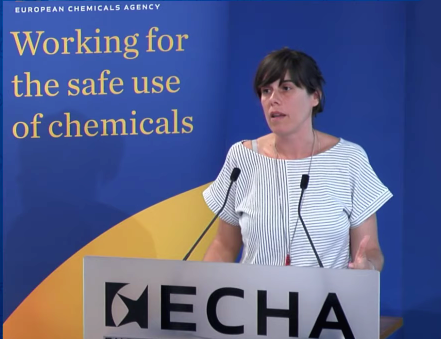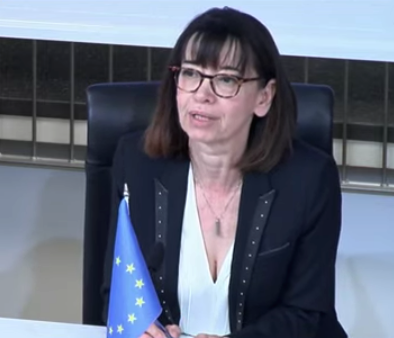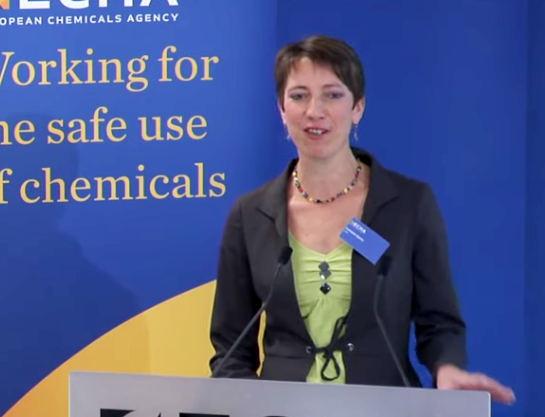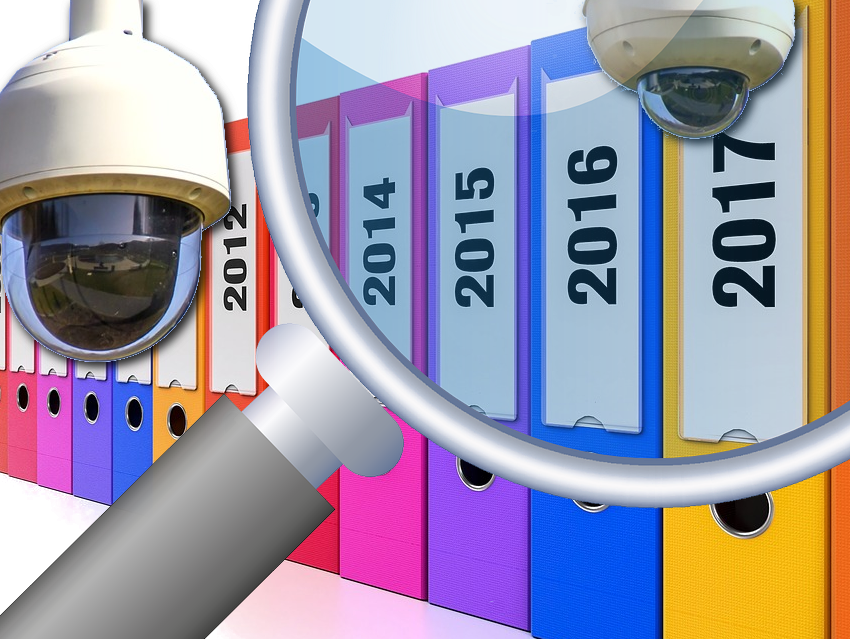Most Comprehensive Database of Chemicals
Around 22,000 chemical substances have been registered in the EU over the past ten years since the entry into force of REACH, the European Union’s regulation of chemicals. With REACH, it is the responsibility of industry to prove whether a substance is safe and to demonstrate how their chemicals can be handled safely. The aim is to ensure a high level of protection for human health and the environment. The duty of care lies with the industry.
Registration is not the only obligation of the industry. The law stipulates that companies regularly update their registration dossiers to ensure that the data on the safety of chemicals is complete and up-to-date. New chemicals must be fully registered.
To date, European chemical companies have prepared more than 95,000 dossiers for around 22,000 substances. The industry has invested four billion euros in this process. Several thousand employees were entrusted with preparing the dossiers in accordance with the requirements of REACH. As a result, today all substances on the EU market are registered in one harmonized system and REACH is the most comprehensive database of chemicals, their behavior, and their use in the world.
A lot has been achieved within the last ten years. Safety in the EU has increased and REACH is a role model for many other countries. However, a lot still has to be achieved. Both industry and authorities must increase their efforts to improve the safety information on chemicals. Many stakeholders agree on this, including ECHA, the European Chemicals Agency, which manages the technical and administrative aspects of the implementation of REACH, Cefic, the European Chemical Industry Council, and the European Commission (EC).
Criticism
 An evaluation project on the quality of REACH registration dossiers, which the German Federal Institute for Risk Assessment (BfR) and the German Environmental Agency (UBA) have carried out, triggered a lot of criticism of REACH.
An evaluation project on the quality of REACH registration dossiers, which the German Federal Institute for Risk Assessment (BfR) and the German Environmental Agency (UBA) have carried out, triggered a lot of criticism of REACH.
The organizations checked all high-production volume chemicals (HPVC) which have been registered by 2014. They checked if data is available and found that more than half of these dossiers (52 %) did not meet the legal requirements in their opinion. This makes them wonder why these chemicals are still allowed in the market. They acknowledge that their evaluation is no formal compliance check, but still, they are worried if ECHA failed to apply the “no data, no market” rule by allowing chemicals with missing safety data onto the market. Tatiana Santos, chemicals policy manager at the NGO European Environmental Bureau (EEB), explained this at the recently held ECHA Stakeholders Day in Helsinki, Finland.
The report triggered the German environmental protection organization BUND to find out what has happened to these dossiers since 2014. In 2014, the BfR identified 940 substances as “non-compliant”. In early 2019, the BUND checked on ECHA’s website if these substance dossiers have been updated since then. They found that 41 of them had not been updated, so in their eyes, they are still non-compliant. More than 600 companies are involved as registrants of these dossiers, BUND said. The 41 dossiers refer to a total of 12 to 121 million tonnes of chemicals used in Europe every year.
196 substances were updated after 2013. However, BUND says, ECHA is not clear about what has been updated and if they are compliant now. For 703 dossiers, BUND could not find any information on ECHA’s webpage. More than 5,000 companies are registering these substances. “We are in the dark, but I think we know enough to be concerned.”, Tatiana Santo said. “A substance should not be used on the market unless it is proved to be safe. It is not acceptable that half of the dossiers have never been updated.”
Tatiana Santos explained that ECHA has launched a set of “soft measures” since 2009 to improve the situation, but EEB thinks this has not improved the situation. Compliance has not approved within the last ten years. Soft measures include (targeted) letter campaigns to registrants, quality observation letters, informal contact with companies, lists of substances that are likely to face compliance checks, and REACH guidance updates.
The EEB wants ECHA to identify all non-compliant dossiers and the responsible companies and to retrospectively check the non-compliant dossiers identified by the BfR report for completeness and revoke the decision, if necessary. In addition, ECHA should improve, increase, and speed up their compliance checks. National authorities “should increase transparency and impose tougher sanctions, including fines, name-and-shame programs, or criminal proceedings without delay.”
Cefic’s Action Plan
 Since 2019, ECHA publishes the “Life Cycle of Decision” on its website to increase transparency. And Christel Musset (pictured right), Director for Registration & IT Tools of ECHA, states that ECHA publishes the companies that are lead registrants of not compliant dossiers. According to her, BUND should have found this information. However, she admits that the agency should learn from this and improve how they present the information in an easier-to-find way on their website.
Since 2019, ECHA publishes the “Life Cycle of Decision” on its website to increase transparency. And Christel Musset (pictured right), Director for Registration & IT Tools of ECHA, states that ECHA publishes the companies that are lead registrants of not compliant dossiers. According to her, BUND should have found this information. However, she admits that the agency should learn from this and improve how they present the information in an easier-to-find way on their website.
“Being compliant with REACH is not only an obligation but also an act of social responsibility. We all need to play our role properly—industry, member states, and ECHA.”, Ofelia Bercaru from ECHA added.
ECHA agrees that in many dossiers important safety information on chemicals is missing. However, they think that in the BfA and UBA report, there is a confusion about what completeness and what compliance of a dossier means.
The completeness check verifies that all the required elements have been provided in the registration dossier and the registration fee has been paid, if applicable to that submission. If during the completeness check the submitted registration dossier is found incomplete, ECHA will issue a deadline by which the registrant has only one attempt to submit the missing or incomplete information. Otherwise the submission will be rejected. All dossiers are checked for completeness. The compliance check verifies that the information submitted by registrants is compliant with the legal requirements. It evaluates the identity description of the substance and the safety information in the dossier.
This means, if the data is not there, then the dossier does not pass the completeness check. However, often dossiers are complete, but ECHA does not agree on the justification why information, e.g., on required animal tests, is not given. This has been a big topic of discussion between industry and ECHA for many years.
Together with the European Commission, ECHA has worked on a plan to improve compliance checks. In June, ECHA announced their intention to raise the number of compliance checks of registration dossiers from 5 to 20 % for each tonnage band. As in the years before, the most critical ones are picked first for the check. In addition, ECHA says some of the substances mentioned in the BfR/UBA report are already regulated today, e.g., as substances of very high concern (SVHC).
ECHA has checked 2,700 dossiers for compliance. 25 % of substances registered above 1,000 tonnes have been checked. 96 substances are flagged for harmonized classification. However, ECHA says they need to intensify this work.
Cefic is proud of what has been achieved so far. However, they also say REACH is not perfect. They think the work of BfR and UBA is useful, but do not see it as drastically as BUND and EEB do. Cefic thinks that some statements are exaggerated simplifications. One such example is that “there are substances on the market illegally”.
 Cefic wants REACH to work; the industry has invested heavily, Sylvie Lemoine, European Chemical Industry Council, said at the ECHA Stakeholders Day. Cefic thinks REACH is the right approach for a safe environment and safe handling of chemicals to protect humans. A problem, however, is that it is not clear what a good dossier is. Industry only hears back when something is missing or went wrong. Therefore, Cefic has launched a voluntary multi-annual action plan for the review and improvement of REACH dossiers. The plan contains guidelines with which companies can systematically check their registration dossiers. They can then decide whether their dossiers may need to be updated with additional information.
Cefic wants REACH to work; the industry has invested heavily, Sylvie Lemoine, European Chemical Industry Council, said at the ECHA Stakeholders Day. Cefic thinks REACH is the right approach for a safe environment and safe handling of chemicals to protect humans. A problem, however, is that it is not clear what a good dossier is. Industry only hears back when something is missing or went wrong. Therefore, Cefic has launched a voluntary multi-annual action plan for the review and improvement of REACH dossiers. The plan contains guidelines with which companies can systematically check their registration dossiers. They can then decide whether their dossiers may need to be updated with additional information.
The implementation of the action plan will be done in close cooperation with ECHA to ensure that any scientific or technical challenges related to dossier updates are resolved. A Steering Committee made up of members of Cefic and ECHA will be established to guide the implementation of the plan. Cefic will be monitoring the progress in reviewing REACH dossiers and will publish status reports on an annual basis. In addition, Cefic provides guidance to companies to facilitate their REACH registration process.
- European Chemical Industry Council (Cefic), Brussels, Belgium
- European Environmental Bureau (EEB), Brussels, Belgium
- Cefic’s REACH dossier improvement plan 2019.




